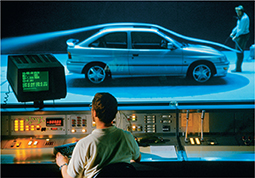Figure 11 The flow pattern of a smoke trail is analyzed by computers to determine the fluid friction forces (air resistance) acting on the vehicle. Engineers use these test data to optimize a vehicle's shape for maximum fuel efficiency.

Efficiency is usually expressed as a percentage. For example, if the efficiency of a machine is 75 percent, then you know that 75 percent of the work input becomes work output. If a machine requires 10.0 J of work input to operate, then the work output is 75% of 10.0 J.
Reducing friction increases the efficiency of a machine. Automobiles, for example, are designed so their wheels roll on bearings that contain many small steel rollers. Recall that rolling friction is less than sliding friction. Thus, the roller bearings reduce the friction of the rotating wheels. To further reduce the rolling friction, the roller bearings are also lubricated with grease.
As shown in Figure 11, the shapes of many cars are designed to minimize air resistance. The lower the air resistance, the more easily a car passes through the air. At highway speeds, more than 50% of the output work of the engine is used to overcome air resistance. Streamlining the car's body reduces the amount of work the engine must do to move the car at any speed.
Section 14.3 Assessment
Reviewing Concepts
 Why is the actual mechanical advantage of a machine always less than its ideal mechanical advantage?
Why is the actual mechanical advantage of a machine always less than its ideal mechanical advantage? Why can no machine be 100% efficient?
Why can no machine be 100% efficient?You test a machine and find that it exerts a force of 5 N for each 1 N of force you exert operating the machine. What is the actual mechanical advantage of the machine?
How can two machines appear identical and yet not have the same actual mechanical advantage?
What information would you use to calculate the efficiency of a machine?
Critical Thinking
Making Generalizations When is the ideal mechanical advantage of a machine greater than 1?
Applying Concepts Suppose you are an inventor in 1900. You are constructing a bicycle of your own design. What could you do to ensure your bicycle efficiently changes the work input into forward motion?
Math Practice
You have just designed a machine that uses 1000 J of work from a motor for every 800 J of useful work the machine supplies. What is the efficiency of your machine?
If a machine has an efficiency of 40%, and you do 1000 J of work on the machine, what will be the work output of the machine?




